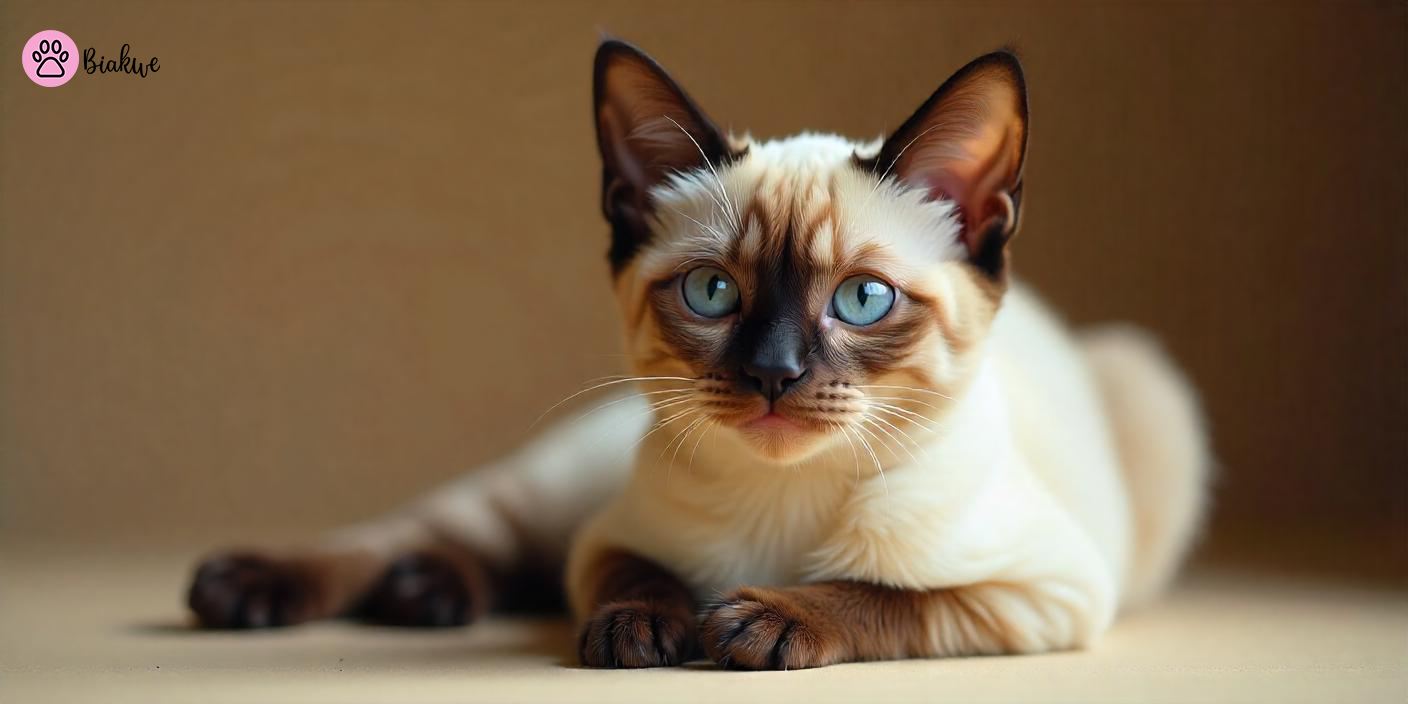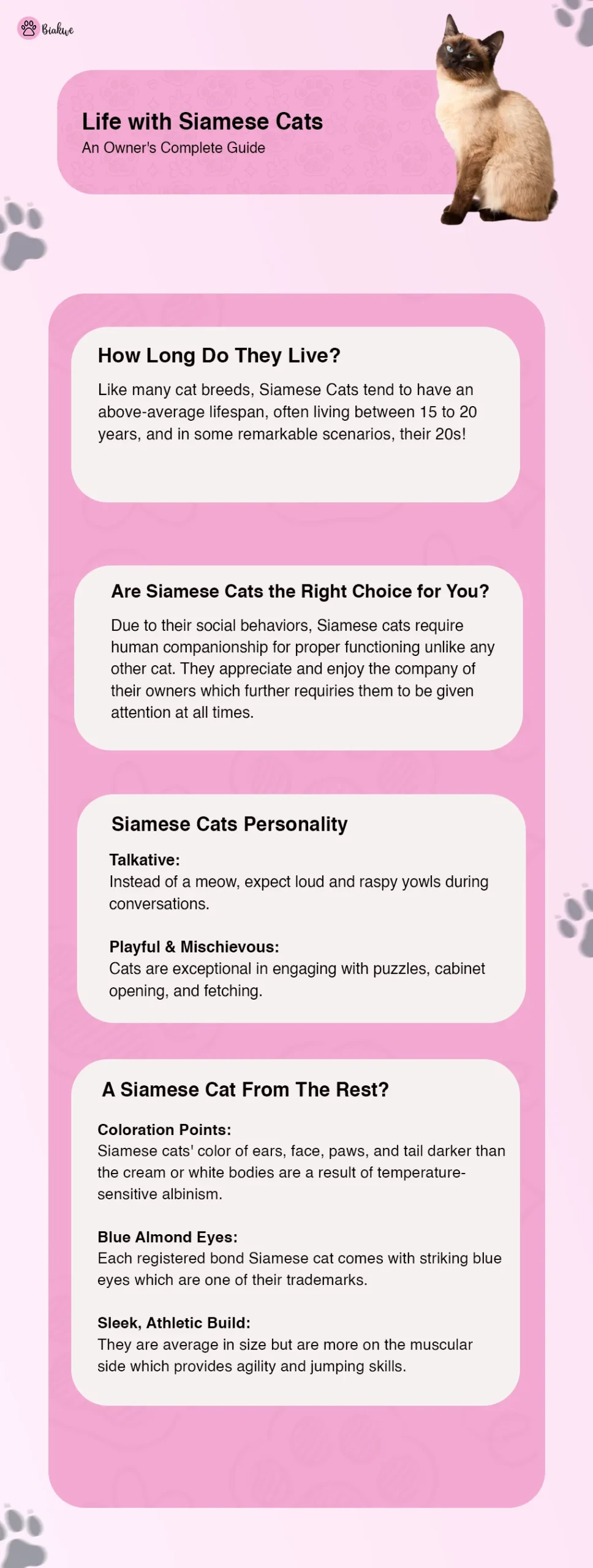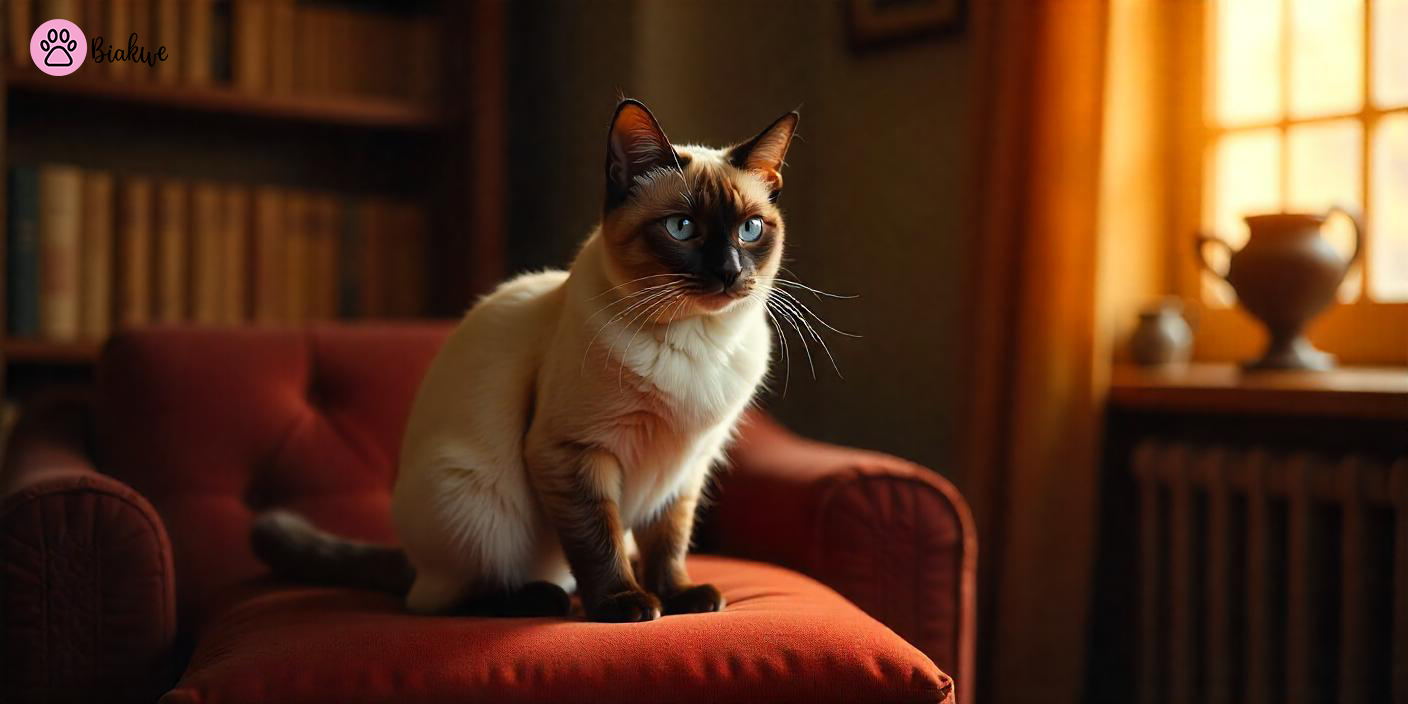“If you think cats are aloof and independent, you have never lived with a Siamese.”
Picture walking through the front door of your house and being welcomed by your blue-eyed friend and a gentle raspy meow. This isn’t just any typical feline; this is a Siamese cat, and they are anything but not ordinary. Unlike other cats, Siamese cats are incredibly talkative, social, and full of life.
Siamese cats don’t just cohabitate—they run your life. You will be woken by an insistent meow at 5:00 AM for breakfast. They will “help” with your work by climbing on your laptop, or insist on providing a concert of their loud opinions…about everything.
In this guide, you will learn about why Siamese cats are more like dogs (and what that means for you), how long Siamese really live and what their colors actually mean (and why some are literally thousands of dollars) .
Are you ready? Let’s get started!
What Distinguishes A Siamese Cat From The Rest?

A Siamese cat is very different from other cats. Let’s talk about the notable features and origin of a Siamese cat.
The Notable Features of The Siamese Cat
- Coloration Points: Siamese cats’ color of ears, face, paws, and tail darker than the cream or white bodies are a result of temperature-sensitive albinism.
- Blue Almond Eyes: Each registered bond Siamese cat comes with striking blue eyes which are one of their trademarks.
- Sleek, Athletic Build: They are average in size but are more on the muscular side which provides agility and jumping skills.
The Siamese Cat’s Origin
The Siamese cat origin traces from 14th-century Thailand (formerly known as Siam). It is then treasured by royalty. The legend claims them to guard temples and escort souls to the afterlife.
They reached Europe in the late 1800 where they quickly attained the status of trend mark in Victorian England.
Siamese Cats Personality: Either Admire Them, Or Find Them “Too Much”
Exceptional intelligence, a strong social character, and the ability to vocalize make Siamese catsbehavior unique in their own respect. Every cat will build a unique bond with the owner and love to follow you to places such as the bathroom or wherever you go.
Essential Characteristics
- Talkative: Instead of a meow, expect loud and raspy yowls during “conversations.”
- Playful & Mischievous: Cats are exceptional in engaging with puzzles, cabinet opening, and fetching.
- Demanding: Alarming to many, set an alarm for them waking you to demanding food or play.
- Extravert: Surrounded by a large family? They will love you for that. From enjoying solitude to asking for company, being around active households makes them thrive.
Probable Problems with the Personality of a Siamese Cat
Every one of us has weaknesses, but not everyone has charm. Siamese cat personality problems are these:
- Separation Anxiety: They do require some companionship. Exceeding their time alone will cause stress.
- Destructive Behavior: When they are feeling bored, a Siamese cat will surely scratch furniture or make furniture unplaced.
- Over-Attachment: They bond too strongly with a person making them ignore everyone.
Keep them actively engaged with feline companions during absence, or interactive toys and puzzle feeders.

Siamese Cats Lifespan: How Long Do They Live?
Like many cat breeds, Siamese Cats tend to have an above-average lifespan, often living between 15 to 20 years, and in some remarkable scenarios, their 20s!
How to Increase Their Lifespan
- Vet-enabled Preventative Services: These have shown an increase in lifespan by early detection of renal issues or untreated dental decay, regular monitoring of nutrition, along with adequate control of replenishing weight ob-gyn visits.
- Diet: They have shown ease in control of obesity by low carbs and high protein diets.
- Living Indoors: Free from the dangers of cars and other predators, as well as various diseases, serenity of the indoors leads to better health.
Fun fact: The oldest documented Siamese cat, Scooter, lived an incredible 30 years!
Their Exotic Variations: Siamese Cats Colors
Apart from the well known seal point variation (which is dark brown-black points), Siamese cats come in a few stunning variations as well.
| Color Type | Description |
| Seal Point | Deep brown-black points, cream body |
| Blue Point | Slate-gray points, bluish-white body |
| Chocolate Point | Light brown points, ivory body |
| Lilac Point | Frosty gray-pink points, white body |
Rare variations include flame point (red) and lynx point (tabby stripes).
What to Expect While Living with a Siamese Cat

If you’re planning to live with a Siamese cat, you need to consider the following points.
They’re Much Louder Than You Expect
Siamese cats communicate through many sounds beyond just meowing. They yowl, trill, and even chirp.
They talk to you “throughout their day”: What they did, meals they want to be served, and of course, complaints. So get ready for a Siamese cat rant.
They Need Litter Mental Stimulation
Siamese cat’s sharp minds can be engaged with puzzle toys, taking for walks on a leash, or clicker training. Like kids, they need to be engaged otherwise they get bored and start becoming sneaky.
They Prefer High Temperatures
Because their short tail offers little coat insulation, they love warm areas such as laps, sunny windows, or even your laptop.
They Are Clean In Terms Of Hygiene
Dirty litter boxes might be a thing of the past, but with Siamese cats, it’s a different story. Keep the box clean, or else they might refuse using it.
Final Thoughts : Are Siamese Cats the Right Choice for You?
Due to their social behaviors, Siamese cats require human companionship for proper functioning unlike any other cat. They appreciate and enjoy the company of their owners which further requires them to be given attention at all times.
They are so funny and intelligent that their devotion can elevate them to the status of a second spouse. In the unfortunate event that you prefer a self-contained, quiet cat, then you need to start looking for another breed.
If you are thinking about getting a Siamese, be prepared to endure a lot of noise, but I promise, every yowl will be worth it.
For more information about cats, visit biakwe.
